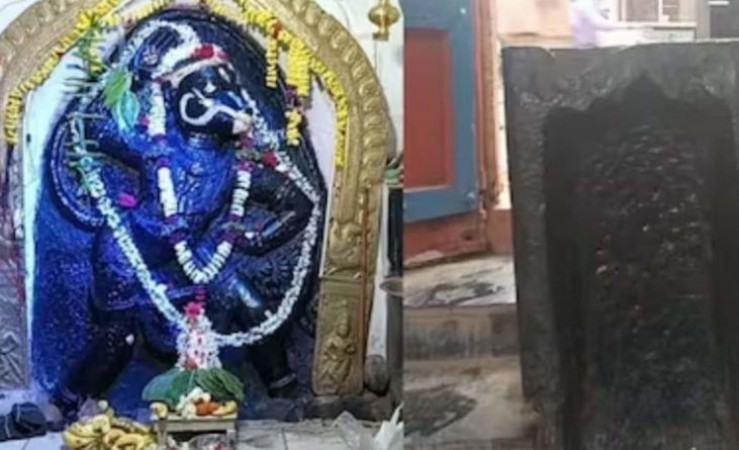
In the heart of Karnataka, nestled near the old Hubli Circle in Hubballi, stands the Shri Mudi Hanumanta Devalaya, a temple that has captured the imagination and devotion of countless believers for centuries. This temple, dating back to the 10th to 12th century during the Kalyani Chalukya period, is not just a place of worship but a sanctuary of healing and faith. Here, the conviction runs deep that a visit to this sacred abode can work miracles, curing ailments that afflict the body and soul.
The roots of this remarkable belief run deep, spanning over 400 years. People from all walks of life, bound by their unwavering faith, converge at this temple in search of solace and healing. It is a testament to the enduring power of spirituality in the lives of those who seek refuge in the divine.
Within the hallowed walls of the Shri Mudi Hanumanta Devalaya, Lord Hanuman is said to reveal himself in three distinct forms. In the gentle morning light, he takes on the form of a child, radiating innocence and purity. As the day progresses, he transforms into a youthful Hanuman, exuding boundless energy and vitality. And as the sun sets, he ages gracefully, embodying wisdom and experience. This divine cycle mirrors the natural rhythms of life, symbolizing the ever-revolving wheel of existence.
The temple's significance extends beyond its healing prowess. Legend has it that the illustrious Chhatrapati Shivaji once graced this sacred abode with his presence. He stayed here for two days, performing rituals and seeking divine blessings before embarking on a pilgrimage. His visit adds to the temple's allure, imbuing it with historical significance.
The Shri Mudi Hanumanta Devalaya is not just a place of spiritual significance but also an architectural marvel. Its structure resembles that of a traditional house, concealing within its walls a multitude of temples. At the heart of it all lies the main temple, housing an awe-inspiring idol of the five-headed Naga, often referred to as Shehnag. This temple, in the shape of a square, is where devotees gather to seek the blessings of their beloved deity.
The idol of the Naga holds a special place in the hearts of devotees. It is believed to possess the extraordinary power to heal. Regardless of age or gender, anyone suffering from ailments like arthritis, muscle spasms, back pain, leg pain, or knee pain can find solace here. The ritual involves gently rubbing one's body against the sacred stone, a profound act of faith that is said to dispel diseases and usher in healing.
Every week, a stream of devotees makes a pilgrimage to this divine sanctuary. They come bearing their burdens of pain and suffering, hoping for relief and healing. With unwavering faith, they rub the stone on their faces, hands, and feet, seeking the alleviation of their physical and spiritual anguish. The annals of this temple are replete with accounts of individuals who have emerged from its embrace, healed and renewed.
In the heart of Karnataka, the Shri Mudi Hanumanta Devalaya stands not merely as a structure of bricks and mortar but as a testament to the enduring power of faith. It is a place where the boundaries between the mortal and divine blur, where belief transcends the constraints of the physical world. Here, amidst the whispers of ancient prayers and the scent of incense, people find solace, hope, and the promise of healing.
Palakkad Youth Conference Explores Pope Saint John Paul II's 'Theology of the Body'
Meet the celebs who converted to other religions
Why is the index finger not used for chanting garlands, havan and applying tilak?